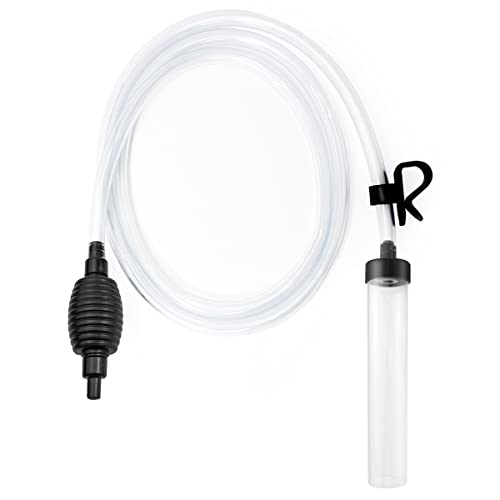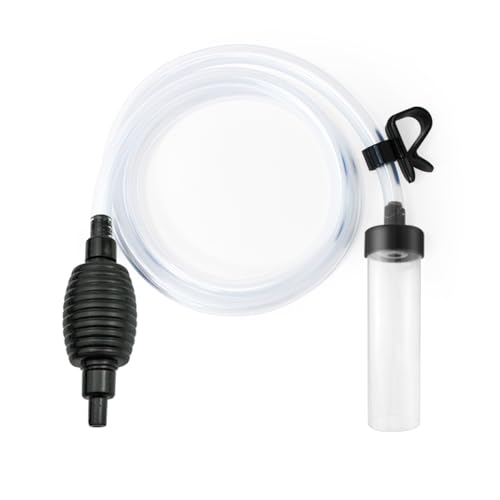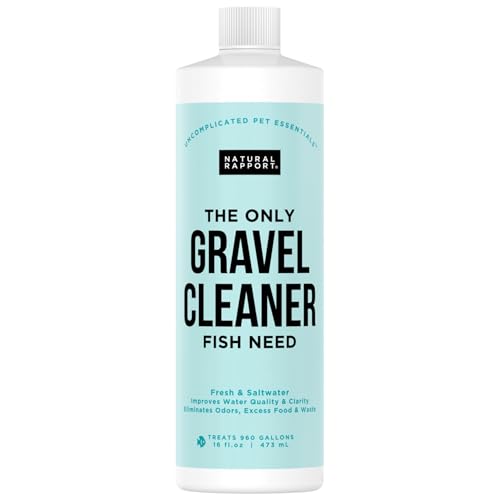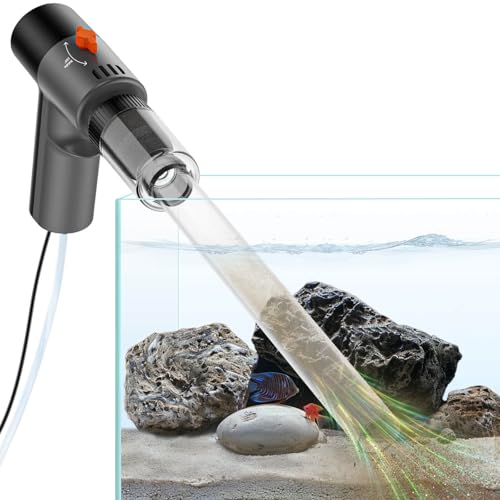The Best Aquarium Gravel Cleaner
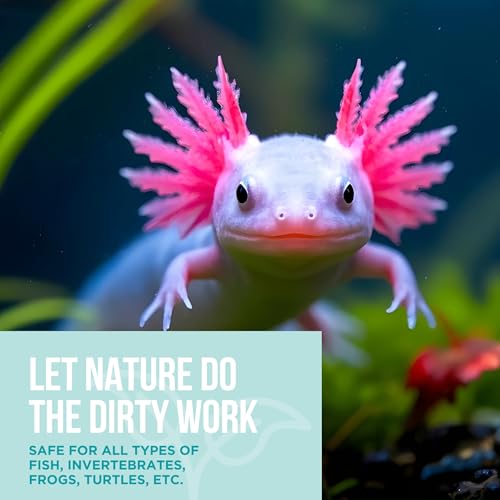
To help you find the perfect aquarium gravel cleaner, we continuously put forth the effort to update and expand our list of recommendable aquarium gravel cleaners. Our team collects, edits and publishes new information, in order to present it to you in an accurate, significant and neatly arranged way.
Our Picks
8 More Aquarium Gravel Cleaner Alternatives
Table of Contents
Buying Guide
Keeping an aquarium clean not only makes it more attractive, but it keeps the chemical levels balanced, consistent and safe. Some fish require very specific pH levels. When waste, uneaten food and plant debris are allowed to decompose on the bottom of the tank, the pH balance is disrupted. Ammonia and nitrate are released in concentrations that are toxic to fish. Beneficial bacteria in the water help to keep levels in check, but they can’t keep up when the tank is excessively dirty.
A well-functioning filtration system is not enough. Your fish have a much better chance of thriving if you periodically vacuum the gravel and freshen the water.
Back in the day, cleaning aquarium gravel entailed emptying the tank, soaking or scrubbing the gravel and replacing the water. No one advises using that method anymore.
For one thing, helpful bacteria in the water are disposed of. Cleaning gravel with bleach or soap kills good bacteria as well.
Secondly, completely draining the tank requires transferring the fish to a holding receptacle, and that’s usually stressful to them. The shock of swimming into water of a different temperature could be fatal.
For these reasons, leave the fish in the tank. Change out only 25 to 30 percent of the water, and pour the wastewater into your house plants. What’s harmful to fish is good for plants.
Here’s a guide to the two most basic types of gravel cleaners. Knowing how they work will give you a better idea of which is best for your aquatic friends.
Manual Gravel Cleaner
This basic tool is inexpensive, effective and easy to use once you get the hang of it. It’s a clear, sturdy tube with an opening at the top for inserting a drainage hose. It acts as a siphon. The trickiest part of using it is getting the flow started. There are people who succeed by sucking on the end of the drainage hose, but that’s a bad idea. You’re sure to get a mouthful of tank water, and it’s not especially healthy for humans.You’ll need a bucket large enough for the water that you’re draining off. A siphon won’t work without gravity, so position the drainage bucket on the floor or at least somewhere lower than the tank. Bear in mind that the straighter the hose hangs, the faster the tank will drain. To avoid having a wet mess on your hands, make sure that the end of the hose is well inside the bucket rather than dangling loose.
With the drainage hose draped over the side of the tank, gently submerge the vacuum tube horizontally. Rock it slightly until most of the bubbles disappear. Keep it completely submerged, but reposition it with the open end down. Lightly pump it up and down a few times. The water should start to flow.
If you’re too forceful, the debris resting on the substrate will be disturbed and float around the tank. The fish will be alarmed. Gentleness is key.
Now you’re ready to start vacuuming. Rather than scrape the surface of the gravel or use scooping motions, keep the tube perpendicular and simply press it into the substrate. Repeatedly lift and press as though you were using a cookie cutter. Scraping the gravel agitates the debris and makes it harder to suck up. Cover small areas at a time.
Manually operated cleaners require a little more work than electric ones, but there are advantages and disadvantages to both.
Electric Gravel Cleaner
This handy gadget makes you wonder why anyone would choose a manual model. We’ll get to that.Electric gravel vacuums eliminate the need for hoses, buckets or siphons. You simply submerge them vertically, flip a switch and start sucking up debris. Some two-in-one models have attached tubing and a filter for partial water changes. Those are nice for killing two birds with one stone. Many products on the market run on batteries.
What’s not to like? Automatic models are understandably more expensive. A sturdy manually operated product could last for years, but a fancy electric one with various gadgets might require hard-to-find replacements parts. The more bells and whistles there are, the more likely it is that something will break down. Not only that, but some electric vacuums vibrate forcefully and make a lot of noise. Fish go into a panic.
A lot of folks would rather just roll up their sleeves and spend some quiet time with their pets.
Extras
These items make cleaning more convenient and are worth looking into:- Manual squeeze pumps for ease of starting the siphon
- Faucet adapters for replacing drained water
- Gravel cleaner tubes and drainage hoses of different sizes for multiple aquariums
- Extension hoses
- Bucket clips for keeping drainage hoses in place
- Attachments for vacuuming in hard-to-reach places
Top Picks
The priciest gravel cleaners aren’t necessarily the best. A product that looks good in the description may have engineering issues or be constructed of shoddy materials. Likewise, some low-priced, no-frills models get the job done and are highly rated by consumers.The best way to ensure that you’re getting a quality product is to read as many verified-purchaser reviews as possible. Look for reviews written by buyers who have used the product for a while.
Here are some consistent best-sellers:
- 25-Foot Python No-Spill, Clean and Fill Aquarium Maintenance SystemAll Python products sell briskly and get very positive reviews. Priced at $40 to $45, this cleaner is a little more expensive than most. However, Python throws in a lot of useful extras, so you may save money in the long run.
The No-Spill model both drains and refills the tank water. It comes with a 10-inch gravel tube, hose, hose connector, faucet pump and brass faucet adapter. If you have more than one tank, you can purchase Python gravel tubes in several different lengths for use with this system. The 100-foot system sells for around $100.
- Kedsum Aquarium Gravel Vacuum and Water Filter
Python is an outstanding brand, but there are other fish in the sea.
This Kedsum design is simple and unique. Priced at around $20, it's highly affordable. One nice feature is the adjustable water-flow control. If you start to daydream but notice just in time that your bucket’s about to spill over, simply turn the knob. This is a handy tool for a smallish tank.
•
EHEIM Quick Vac Pro Automatic Gravel Cleaner and Sludge Extractor
The name could be more appealing, but this product gets high marks.
It runs on batteries and is fully submergible up to 3 feet. Its light weight makes it suitable for both thorough cleanings and touch-ups. The suction power was designed to create minimal disturbance. A mesh filter collects dirt and easily detaches for dumping. Customers love the notched design of the tube opening. You can't beat it for getting into nooks and crannies.
Top Rated Aquarium Gravel Cleaners
If you're looking into finding the best rated aquarium gravel cleaner, you should probable check out the Laifoo 7ft Siphon Vacuum Cleaner. We looked at various sources of reviews and found this one to have the best mix between review count and average rating stars.
The Lowest Price We Could Find
Often, going for the best price is a simple but good option. With a price of $12.90 (last checked this morning), we do not list any other aquarium gravel cleaner cheaper than the Laifoo 5ft-S Siphon Vacuum Cleaner. Just remember that it's not always the best option to go for the cheapest one.
The Aquarium Gravel Cleaner With the Most Reviews
With at least 413 reviews and counting, the Natural Rapport Cleaner might be another option to consider. This large amount of reviews signalizes that many people are using it, with most of them beeing satisfied.
High Quality Aquarium Gravel Cleaners
It's quite rare that the saying "You get what you pay for" turns out incorrect. If you have the money on the sideline, feel free to choose the most expensive item from our list: The VIPASKA Electric Cleaner currently sells for $79.90.
The Aquarium Gravel Cleaner With the Most Clicks
If you trust us and our users, feel free to check out the Natural Rapport Cleaner. Our statistics say that it is the most favorite Aquarium Gravel Cleaner from the list above.
Our Bestseller
If you're still undecided, I would recommend that you go with the masses and choose the top selling aquarium gravel cleaner: The Laifoo 5ft-S Siphon Vacuum Cleaner is the hottest bestseller in this category right now.
Aquarium Gravel Cleaner Reviews
Further Reading on Aquarium Gravel Cleaners
Research
For use in conjunction with an aquarium having a layer of gravel, aggregate, or the like along its bottom, a device for removing the aggregate from the aquarium, cleaning the aggregate, and thereafter returning the aggregate to the aquarium. The device comprises a …
… 07-01, 1978-06-13, Dockery Denzel J, Aquarium gravel cleaner. US4257893A (en) *, 1979-04-04, 1981-03-24, Burton Todd J, Portable purification device for use in aquariums. US4722670A (en) *, 1983-06-20, 1988-02-02, Zweifel Michael R, Aquarium pump and cleaning …
Comments
About this Article
It was last updated on 2025-12-23 08:25:15 and has been viewed 4655 times.
